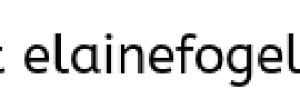 Have you given any thought to your business’ or nonprofit’s standard font styles? You know, the ones you’re supposed to use consistently in your marketing communications?
Have you given any thought to your business’ or nonprofit’s standard font styles? You know, the ones you’re supposed to use consistently in your marketing communications?
I actually blogged about this in January 2014, “Why Typography is Important in Marketing,” and in March 2011, “Use Simple Fonts for Better Marketing Results.” What’s interesting is that not much has changed.
What prompted me to revisit this topic was an email I received from a marketing colleague yesterday:
Change is not an event, rather it’s a process.
In my experience, it starts with leaders understanding that change is necessary — and then creating a leadership team to assist with developing the implementation plan and managing adoption.
What did you notice immediately?
It’s comic sans!!! Argh! The most inappropriate business typography, in my opinion.
Here’s what the font designer, Vincent Connare, said about his comic sans design:
I designed Comic Sans while I was working at Microsoft. I had been given a beta version of Microsoft Bob, a comic software package designed primarily for young users. The package featured a dog called Rover, with message balloons set in Times New Roman — a system font oddly unsuited to the comic context. My inspiration for Comic Sans came from the shock of seeing Times New Roman used so inappropriately… When I designed Comic Sans, there was no expectation of including the font in applications other than those intended for children.”
So, Comic Sans was intended for children. Nothing more to say. Avoid it unless your target audiences include kids (or animals).
Why are font styles important to your brand identity?
According to Janie Kliever in this excellent Canva article, “Think about what your clothes might say about you: based on what you wear, people might rightly or wrongly make assumptions about your style, your personality, your socio-economic background, your age (or the age you wish you were), or the kind of impression you want to make. And different occasions and situations call for different apparel.
You wouldn’t wear a bathing suit to a job interview; then again, you wouldn’t want to wear a suit and tie during your vacation on the beach either. There’s an element of appropriateness to consider.
Typography often provides that at-a-glance first impression that people gauge and judge the rest of the design by — so your font choices need to be purposeful and appropriate.”
Kliever states that every typeface has its own mood or personality such as serious, casual, playful, or elegant. And, I’ll add that the ones you choose need to match your business, nonprofit, or personal brand personality. (If you’re unsure what your brand personality is, it’s time to develop a marketing/branding plan! Check out my book below.)
Of course, you have to take your audience and medium into account. Some typefaces work well in print while others are best suited for digital media. Some are better in smaller spaces and others in larger ones.
Always consider readability when choosing font styles. If your audience can’t read your messages, what good are they?
That’s why it’s common to select a complementary serif and sans serif font for your brand and use them separately or together.
Here’s a good infographic that explains the four different font categories:
So, which are the best font styles for your brand?
This is a very subjective question. Once you develop your branding plan with its identified brand personality, begin researching different styles before finalizing yours.
Here are some good articles on typography:
4 Top Trending Fonts for Graphic Designers
Typography Resources from Typewolf
Got any other typeface resources you can add?
 My new book, Beyond Your Logo: 7 Brand Ideas That Matter Most For Small Business Success is now available in paperback and e-book. Click here for the list of booksellers worldwide where you can get your copy!
My new book, Beyond Your Logo: 7 Brand Ideas That Matter Most For Small Business Success is now available in paperback and e-book. Click here for the list of booksellers worldwide where you can get your copy!
Share this post!
















Connect with me!








Liked this post? Follow my blog for more.